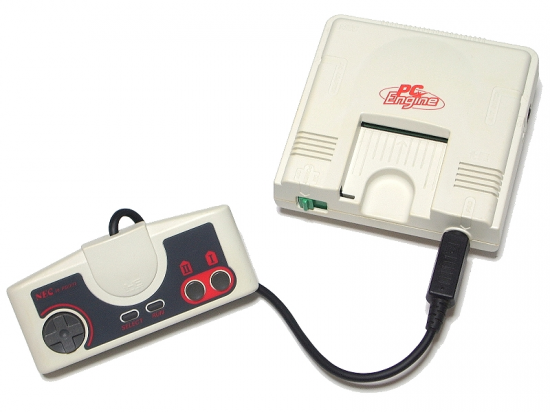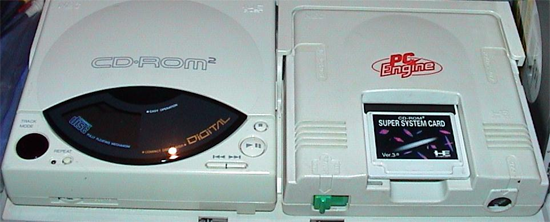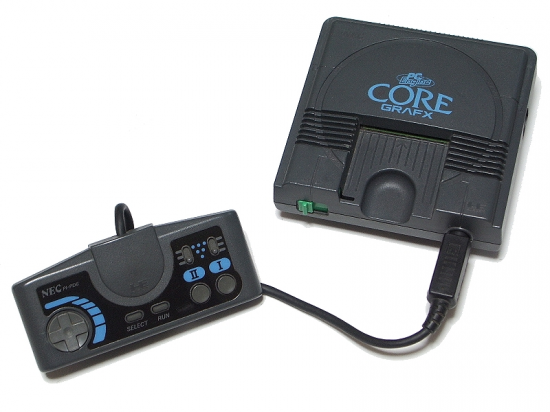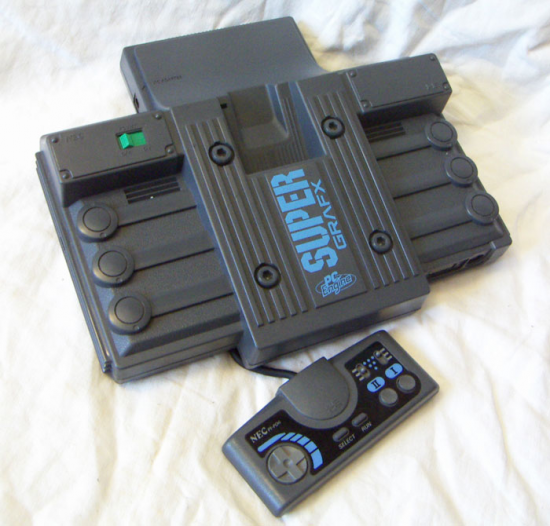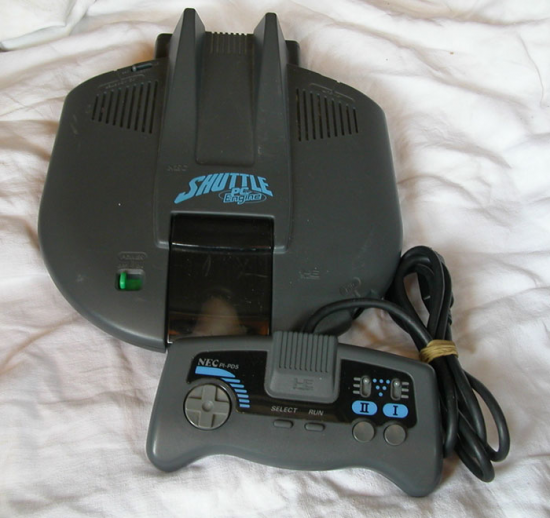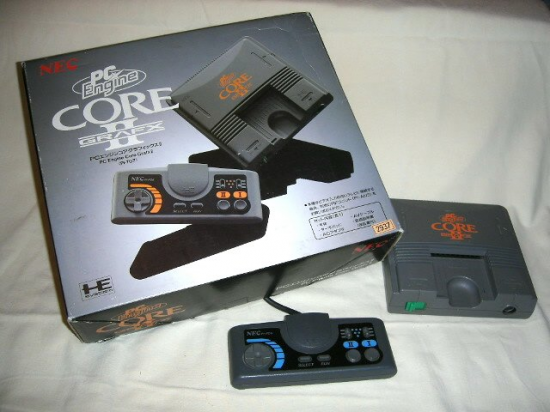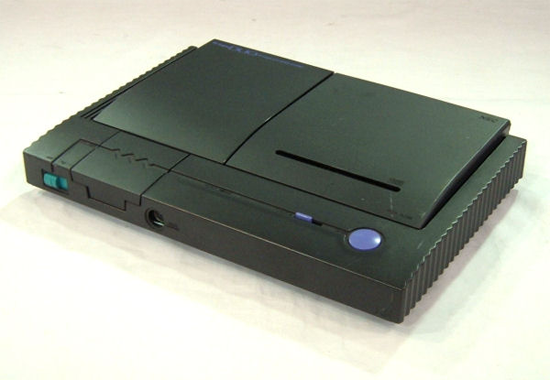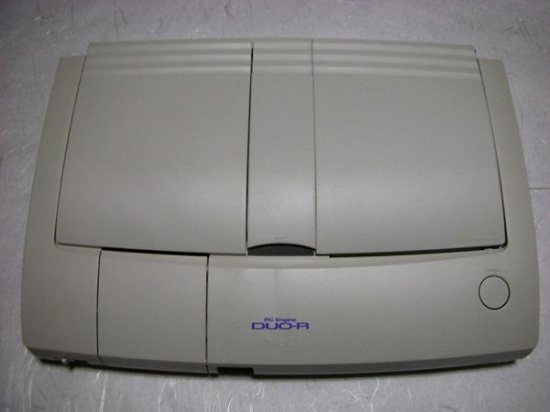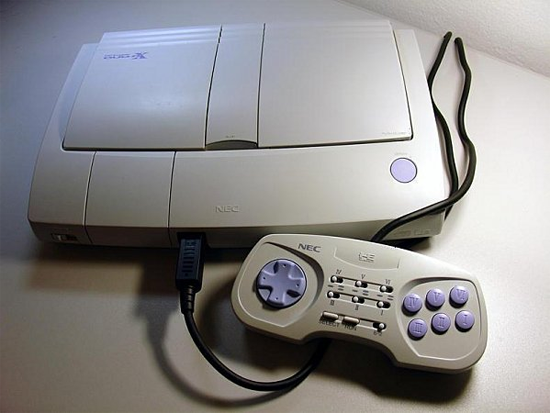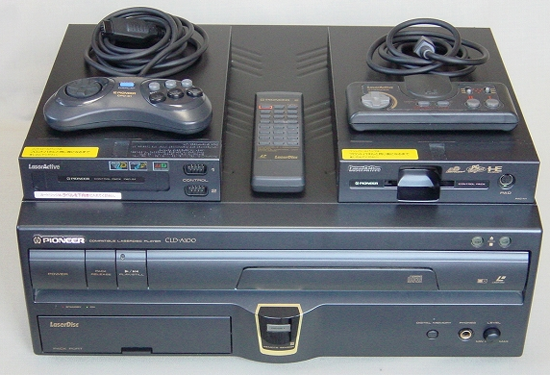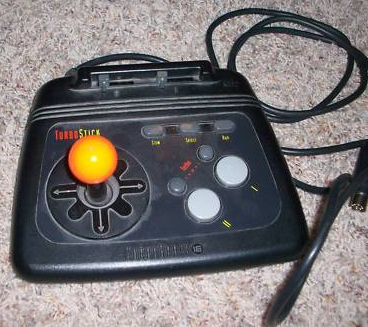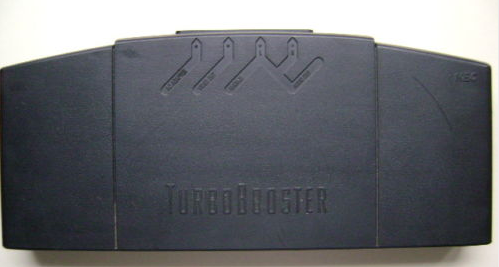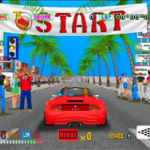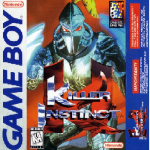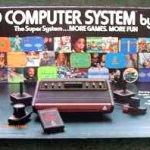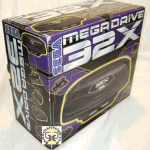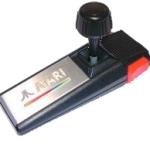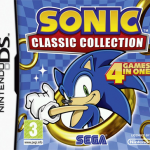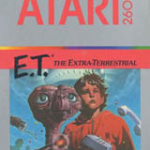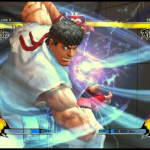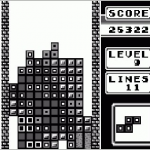The PC Engine was an 8-bit console which was released in Japan in 1987. It was a joint project by games developers Hudson Soft and electronic giants NEC. It was released in the USA as the TurboGrafx-16 in 1989. It also had a limited release in the UK in 1990 as the TurboGrafx though the original PC Engine was imported heavily throughout Europe during the late 80s and early 90s.
The original PC Engine was incredibly small. In fact, it still holds the Guinness World Record for being the smallest video games console ever made. Lots of add ons and variations of the system were released during it’s lifetime. The console was fairly successful in Japan but it struggled to get a large share of the market in North America. In total 10 million consoles were sold worldwide (around 2.5 million in North America).
Instead of using cartridges, the PC Engine used cards which were about the same size as a credit card (similar to the cards which were used on the Sega Master System). They were known as HuCards (short for Hudson Cards) in Japan and TurboChips in the United States.
For some reason the PC Engine only had one controller port. Just about every console in the previous 15 years had been released with 2 controller ports so this was a strange decision. However, they did address this by releasing a multi tap accessory which allowed up to 5 players to play at the same time (It was known as the TurboTap in North America).
In 1988 the CD ROM2 add on was released, the first time any games system had used CDs for games.
The CD ROM was quite slim for its day and came with an interface unit in which you could place both the PC Engine and the CD ROM. It was both practical and pleasing to the eye, something which Sega never took notice of years later when they released their Sega CD add on (which had to be powered seperately).
The CD ROM was ahead of its time. The extra memory gave developers more options when designing games and extended the life of the system for years (games were released right up to 1999).
The PC Engine sold well in it’s first year, boasting higher sales than the NES in Japan. However, the PC Engine slowly fell out of favour after the release of the Super NES. Even though the Sega Mega Drive was technically superior to the PC Engine, it never managed to break the market in Japan and sat in 3rd place behind the Super NES and the PC Engine in the early 90s.
Part of the reason for the PC Engines popularity in Japan was Erotic games, which were very popular on the console. Though the system boasted some excellent games in it’s own right. R-Type was one of the first games released on the console and can be regarded as a killer app in many respects. Bomberman 94 was a great game, Dracula X – Rondo of Blood was a superb Castlevania game from Konami and the gory SplatterHouse was lots of fun too.
One of the most popular games for the system was Street Fighter II Dash Champion Edition. The game was on a par with the ground breaking Super NES version, which was on a much more technically advanced machine.
The console is fondly remembered in both Japan and North America with many of it’s games finding their way onto Nintendo Wiis Virtual Console.
TurboGrafx-16
When NEC were doing market research in America they discovered that the PC Engine name caused a lot of confusion amongst customers as they assumed it was a computer and not a games console. Therefore the console was re-branded in North America as the TurboGrafx-16 Entertainment SuperSystem.
The initial advertising campaign promoted the fact that the console was the worlds first 16-bit system. Though in reality it was an 8-bit system with a 16-bit graphics chip. Unfortunately, the TurboGrafx-16 was released in North America just two weeks after the release of the Sega Genesis.
Not only did Sega already have a brand name in North America (having released the Master System and many popular arcade games), they were also quick to put out in their marketing campaign that the TurboGrafx wasn’t actually a 16-bit system.
NES decided to change the look of the console for the North American release as well. The white was changed to black and the console was made larger too. Unfortunately, they didn’t add a second controller port so TurboGrafx owners had to purchase the Turbo Tap peripheral in order to play their friends. The Genesis only came with one controller too but came with that all important second controller port built in.
The CD ROM add on was also released in North America. Known as the TurboGrafx-CD, the add on attached to the back of the console instead of using an interface like the PC Engine CD ROM2. It also came packaged in a very large plastic case in which the TurboGrafx, CD ROM, cables and games could be stored.
The TurboGrafx-16 did sell a few million units and had a cult following amongst gamers though it struggled against the Genesis and the Super NES. There were many reasons for this. The PC Engine outsold the Sega Mega Drive (Genesis) in Japan but it was released before it and had already developed a following. Being released in the States two weeks after the Genesis meant that they had no such advantage.
Many software companies which supported the PC Engine in Japan but could not release the same games in North America because they had an agreement with Nintendo not to produce games for other companies. Because of this, 3rd party support was very limited compared to other consoles and many of the best games were developed by Hudson themselves. Many other games weren’t ported to the States because they weren’t suited to the North American market. This meant that the TurboGrafx fell behind the Gensis, the Super NES and even the older NES.
Specifications
Even though it was marketed as a 16-bit machine in North America, the console was powered by the 8-bit Hudson Soft HuC6280 processor, which could be clocked at 1.79 MHz or 7.16 MHz.
It did have a dual 16-bit graphic chips inside it though (the HuC6260 Video Color Encoder and HuC6270A Video Display Controller) which enabled it to display much superior graphics over other 8 bit machines. The maximum resolution was 565 by 242 pixels however most games used 256×239.
Designers could choose from a palette of 512 colours, being able to use up to 482 on screen at the same time. The console had 8kb of RAM and 64kb of VRAM. It used the HuC6280A audio chip for sound, which allowed up to 6 audio channels.
The cards (HuCards/TurboChips) ranged in size from a few megabytes to as much as 20.
Variations
The PC Engine and TurboGrafx-16 are remembered for the large number of official variations which were released.
PC Engine CoreGrafx
Released in 1989, the CoreGrafx technically identical to the original PC Engine except for the RF output being replaced by AV. The white casing was changed to dark grey too.
PC Engine Supergrafx
Released in Japan in 1989, the SuperGrafx was an improved version of the original PC Engine. It had the same CPU however it had 4 times as much RAM and a second graphics chip.Though only 7 games were developed which took advantage of the extra memory and the games which were released were quite expensive compared to other games.
The system had a similar colour theme as the CoreGrafx and the controllers were identical.
PC Engine Shuttle
Also released in 1989 was the PC Engine Shuttle. This was another variant of the original PC Engine and used the grey colour design which all systems that year used. Strangely, the Shuttle was unable to connect to the popular CD ROM2 add on which was released the previous year. So it wasn’t a desirable option.
PC Engine CoreGrafx II
In 1991 NEC released the CoreGrafx II. It was identical to the original CoreGrafx except it was in lighter grey and orange.
PC Engine Duo / TurboDuo
Released as the PC Engine Duo in Japan in 1991 and the TurboDuo in North America a year later, the Duo was a combination of a PC Engine and the CD ROM add on.
The Super System Card accessory which upgraded the PC Engine with 192 KB of RAM was built into the Duo. The Duo in each territory was able to play regular audio CDs, card games (HuCards/TurboChip games), SuperGrafx only games and CD ROM2 games from any region. That is, the TurboDuo could play PE Engine CD ROM2 games and the PC Engine Duo could play TurboGrafx-CD games.
PC Engine Duo R
In 1993 NEC released the Duo R, a slimmed down version of the original Duo. It lacked the headphone socket and expansion port which it’s predecessor had.
PC Engine Duo RX
Released a year later in 1994, the Duo RX was the same machine as the Duo R except it came with a 6 button joypad.
Sharp X1 Twin
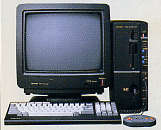 Released in 1987 around the same time the PC Engine debuted was the Sharp X1 Twin (the last Sharp X1 machine to be developed). Essentially it was a personal computer which also had a slot for HuCards, which enabled it to play PC Engine games.
Released in 1987 around the same time the PC Engine debuted was the Sharp X1 Twin (the last Sharp X1 machine to be developed). Essentially it was a personal computer which also had a slot for HuCards, which enabled it to play PC Engine games.
For more information on the X1 I recommend checking out Kevin Giffords excellent article on the system at MagWeasel.
Pioneer LaserActive
The was a laser disc console which was released by Pioneer in Japan and the United States in 1993 for around $1,000. It was possible to purchase add on modules which would allow you to play Sega Mega Drive (Genesis) games and PC Engine (TurboGrafx-16) cards and CDs.
For more information on this console please read our Pioneer LaserActive article.
Handheld Devices
NEC also released two portable versions of the PC Engine. The PC Engine GT, known as the TurboExpress in North America, was a decent handheld system though it suffered from poor battery life. The PC Engine LT was a slightly smaller device which resembled the design the GameBoy Pocket would later use.
For more information on these handheld devices, please refer to these articles:
PC Engine GT (Turboexpress) & PC Engine LT.
Accessories
Like any games console, the PC Engine had various accessories available.
TurboTap
One of the most common peripherals was the multi player adaptor, which was an important item since the console only came with one controller port. In North America it was known as the TurboTap.
TurboStick
The TurboStick was an arcade stick which was released not long after the release of the TurboGrafx.
TurboBooster
The TurboBooster was a stereo system accessory for the TurboGrafx which let you connect to a television or stereo system using AV cables rather than RF.
The Turbo Booster Plus was also released, which was the same peripheral except it had some memory built in.
Super System Card
 The CD ROM2 only came with 64kb of RAM. Therefore NEC and Hudson released the Super System Card, a HuCard which came with 192kb of RAM to boost the systems total up to 256kb. The PC Engine Duo machines came with this additional memory built in.
The CD ROM2 only came with 64kb of RAM. Therefore NEC and Hudson released the Super System Card, a HuCard which came with 192kb of RAM to boost the systems total up to 256kb. The PC Engine Duo machines came with this additional memory built in.
Arcade Card
Two larger memory cards were also released: The Arcade Card Pro and the Arcade Card Duo. The Arcade Card Pro had a whopping 2304kb of RAM and was designed for the original CD ROM add ons. The Arcade Card Duo had slightly less with 2048kb of RAM and was designed for the DUO systems which already had 256kb of RAM built in.
Only a few games were released which made full use of the extra memory, most of them being ports of Neo Geo fighting games. Though the games which were released were pretty impressive for their time.
Videos
PC Engine Review
Turbografx-16 Promo VHS Video 1: “Get Turbocharged!”
TurboGrafx-16 Review
TurboGrafx-16 CD-ROM (“collection overview” of the original TurboGrafx CD-ROM peripheral)
Links
- The PC Engine Software Bible – Huge list of games which were released for the PC Engine.
- PC Engine Fix – Dedicated PC Engine site.
- PC Engine Clones
- 101 Secrets of the PC Engine
- TurboGrafx-16 101: The Beginner’s Guide
